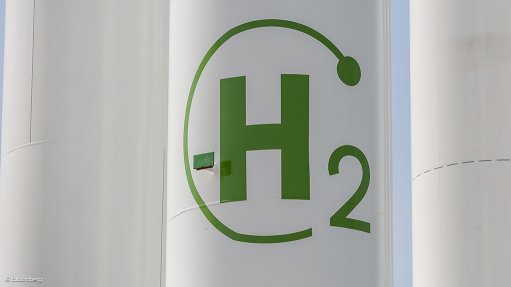TPT continues to strive for greater efficiency at Durban port
The Port of Durban has come a long way but it is not yet where Transnet Port Terminals (TPT) wants it to be, CE Nozipho Sithole told delegates attending the Transport Forum Special Interest Group gathering, held at the former Durban Maritime School of Excellence this month.
“I’m not sure how many of us remember the congestion. Those were the days when you couldn’t drive on Bayhead road because there were trucks all over the place and [there were large numbers] of vessels at outer anchorage awaiting berths,” she said, adding that TPT had since reduced train and truck turnaround times at its container terminals in Durban and Richards Bay.
She noted that the massive storm that had caused significant damage in the Durban port in October 2017 had been a setback.
“During that storm, we lost eight ship-to-shore cranes, some rubber-tyre gantry (RTG) cranes and some buildings. It was a great trauma for the people that were at the port at that time. “For three months, Durban’s container terminals were operating at between 25% and 50% of their capacity.”
However, the resilience of those working at the port, the understanding of customers and agreements with terminals across the world had not only helped the recovery but also driven up efficiencies.
As a result, seaside congestion had dropped, with vessels that were once spending up to ten days in port now leaving within four hours.
“Right now, we are berthing on arrival, which is three hours after the vessel arrives,” she said.
Sithole added that, although vessel waiting times at Richards Bay had been reduced, TPT was still not happy with equipment at the port. A great deal of investment was required in this area.
Although the loading of chrome and magnetite did not pose a problem, there were constraints with agricultural products, she pointed out.
In an interview with Engineering News, she explained that extremely old equipment used for loading wood chips had seen ships waiting in port for up to ten days, when they should have left within four days. The necessary parts had been procured and this equipment was about to be completely refurbished.
A tender for the refurbishment of aged equipment for loading aluminium has also been put out.
At container level, Sithole said TPT continued to be the number one terminal operator in Africa.
TPT intended to be among the top five terminal operators in the world within five years and would extend its reach into the rest of Africa.
Currently, TPT regarded itself essentially as a terminal operator, Sithole pointed out.
“Whenever we talk to our colleagues, we wait for a train or a truck or a vessel. We want to move from being a pure terminal operator to a facilities operator. We will talk to the shipping line as well as the cargo owner. We will provide the inland facilities. “We will provide the value-added services so that we firmly occupy the space of a logistics service provider.
“We will offer terminals as a service using the digital tools and rich data that we have at our disposal to really start connecting suppliers and traders and customers, irrespective of where they find themselves in the world,” she said.
She said continued investment would see the delivery of two new tipplers in Saldanha Bay, a new tippler in Richards Bay, more RTGs in Durban and new mobile harbour cranes in the Maydon Warf environment.
Alex Hill, part of the national executive of the South African Association of Ship Operators and Agents, confirmed that there had been definite improvements, especially when it came to ship working hours.
He said TPT had various targets for its terminals. At Durban’s Pier 2 container terminal, TPT was doing 49 moves per hour. This increased to 61 moves in March. At Pier 1, the target was 53 moves per hour. TPT recorded 41 moves across ships’ railings in February and 57 in March.
At Coega, which had a target of 65, TPT was operating below target at 53 in February and 46 in March. However, the biggest problems were in Cape Town, which had a target of 56 moves per hour but averaged just 39 in February and 35 in March.
In contrast, Port Elizabeth, with a target of 38 moves per hour, was currently averaging 44 moves.
Hill said that, despite the fact that there was considerable improvement, Durban was not yet up to the standard of international ports such as Abidjan.
Comments
Press Office
Announcements
What's On
Subscribe to improve your user experience...
Option 1 (equivalent of R125 a month):
Receive a weekly copy of Creamer Media's Engineering News & Mining Weekly magazine
(print copy for those in South Africa and e-magazine for those outside of South Africa)
Receive daily email newsletters
Access to full search results
Access archive of magazine back copies
Access to Projects in Progress
Access to ONE Research Report of your choice in PDF format
Option 2 (equivalent of R375 a month):
All benefits from Option 1
PLUS
Access to Creamer Media's Research Channel Africa for ALL Research Reports, in PDF format, on various industrial and mining sectors
including Electricity; Water; Energy Transition; Hydrogen; Roads, Rail and Ports; Coal; Gold; Platinum; Battery Metals; etc.
Already a subscriber?
Forgotten your password?
Receive weekly copy of Creamer Media's Engineering News & Mining Weekly magazine (print copy for those in South Africa and e-magazine for those outside of South Africa)
➕
Recieve daily email newsletters
➕
Access to full search results
➕
Access archive of magazine back copies
➕
Access to Projects in Progress
➕
Access to ONE Research Report of your choice in PDF format
RESEARCH CHANNEL AFRICA
R4500 (equivalent of R375 a month)
SUBSCRIBEAll benefits from Option 1
➕
Access to Creamer Media's Research Channel Africa for ALL Research Reports on various industrial and mining sectors, in PDF format, including on:
Electricity
➕
Water
➕
Energy Transition
➕
Hydrogen
➕
Roads, Rail and Ports
➕
Coal
➕
Gold
➕
Platinum
➕
Battery Metals
➕
etc.
Receive all benefits from Option 1 or Option 2 delivered to numerous people at your company
➕
Multiple User names and Passwords for simultaneous log-ins
➕
Intranet integration access to all in your organisation


















